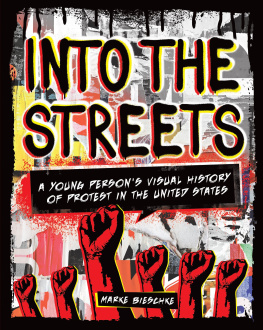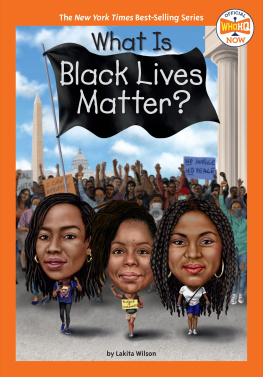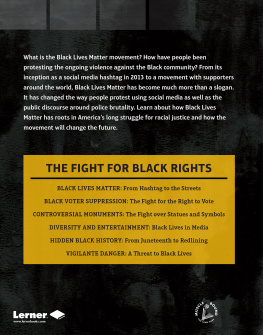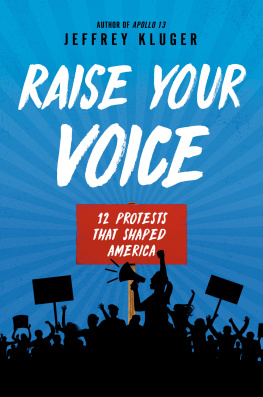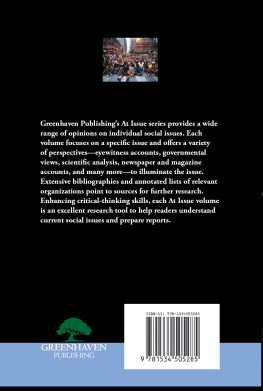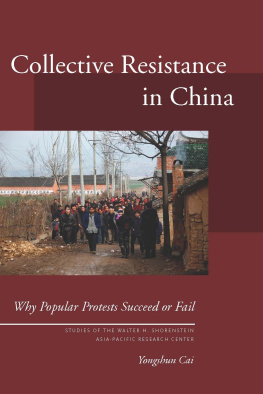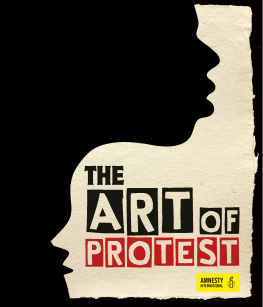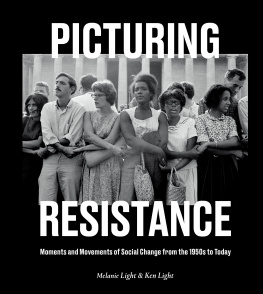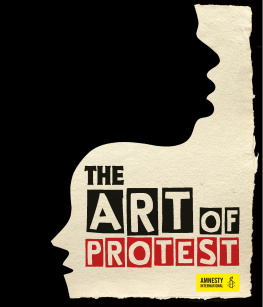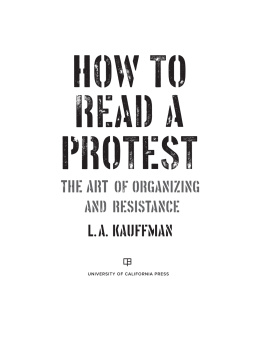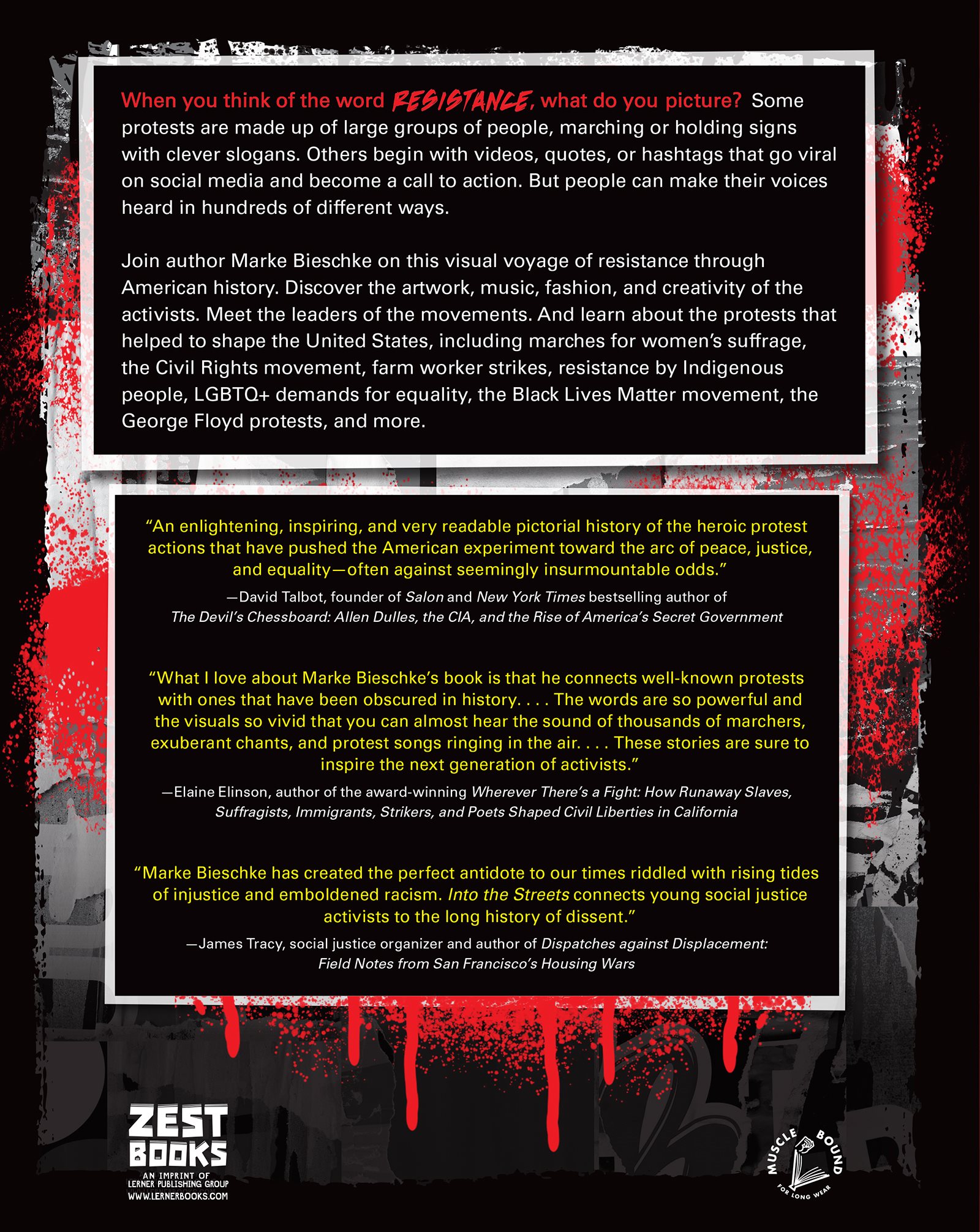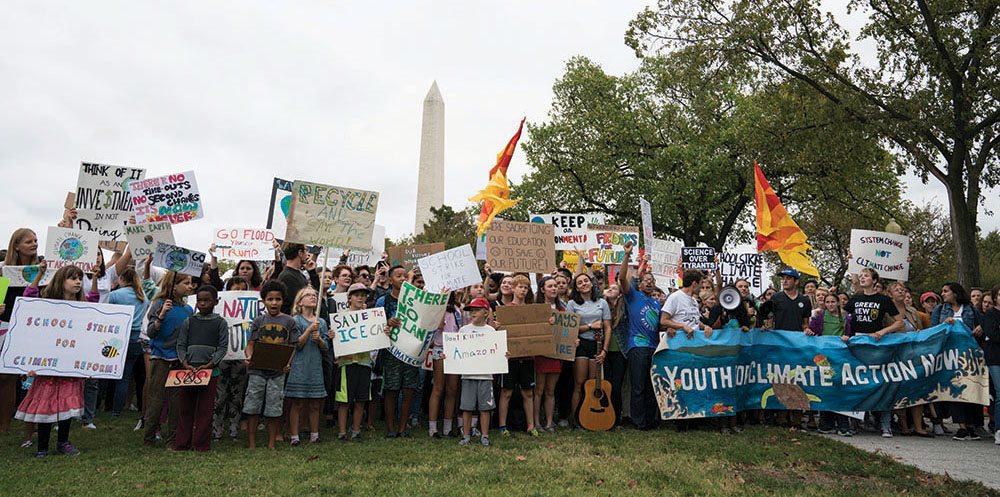For my parents, who let me speak my mind, and for all those who raise their voices for justice
Text copyright 2020 by Marke Bieschke
All rights reserved. No part of this book may be reproduced, stored in a retrieval system, or transmitted in any form or by any meanselectronic, mechanical, photocopying, recording, or otherwisewithout the prior written permission of Lerner Publishing Group, Inc., except for the inclusion of brief quotations in an acknowledged review .
Zest Books
An imprint of Lerner Publishing Group, Inc.
241 First Avenue North
Minneapolis, MN 55401 USA
For reading levels and more information, look up this title at www.lernerbooks.com .
Visit us at zestbooks.net .
Design by Laura Mitchell and Kimberly Morales.
Main body text set in Univers LT Std 45 Light.
Typeface provided by Adobe Systems.
Library of Congress Cataloging-in-Publication Data
Names: Bieschke, Marke, author.
Title: Into the street s : a young persons visual history of protest in the United States / Marke Bieschke.
Description: Minneapolis, M N : Zest Books, [2020 ] | Includes bibliographical references and index . | Summary: Prominently featured photos, artwork, and other visual elements will guide young adult readers through this lively, informative exploration of significant protests, sit-ins, and collective acts of resistance throughout US history. Provided by publisher.
Identifiers: LCCN 2019034596 (print ) | LCCN 2019034597 (ebook ) | ISBN 781541579033 (library binding ) | ISBN 781541579040 (paperback ) | ISBN 781541581463 (ebook)
Subjects: LCSH: Protest movementsUnited StatesJuvenile literature . | Protest movementsUnited StatesPictorial worksJuvenile literature . | Political participationUnited StatesJuvenile literature . | Political participationUnited StatesPictorial worksJuvenile literature.
Classification: LCC HN59.2 .B54 2020 (print ) | LCC HN59.2 (ebook ) | DDC 303.48/40973dc23
LC record available at https://lccn.loc.gov/2019034596
LC ebook record available at https://lccn.loc.gov/2019034597
Manufactured in the United States of America
2-49621-47891-12/10/2020
Contents
Introduction
A Rich Pageant of Protest and Resistance
Chapter 1
From Pueblo Revolt to Underground Railroad
Chapter 2
Chucking Tea for Liberty
Chapter 3
An Early Stand for Black Civil Rights
Chapter 4
The Days the Trains Stood Still
Chapter 5
A Grand Parade for Womens Voting Rights
Chapter 6
A Rally to Inspire Fear
Chapter 7
Marching for Change during the Great Depression
Chapter 8
A Street Fight against Political Corruption
Chapter 9
Rosa Parks Refuses to Give Up Her Seat
Chapter 10
Youth on the Front Lines
Chapter 11
They Had a Dream
Chapter 12
Huelga!
Chapter 13
Burning Draft Cards, Levitating the Pentagon
Chapter 14
Season of the Flower Children
Chapter 15
No More Miss America
Chapter 16
Fists Raised for Black Power
Chapter 17
Chaos in Chicago
Chapter 18
Rioting for Gay Liberation
Chapter 19
Taking the Rock
Chapter 20
A Revolt behind Bars
Chapter 21
An Occupation Full of Echoes
Chapter 22
Save the Humans
Chapter 23
Out and Proud for LGBTQ Rights
Chapter 24
The Battle in Seattle
Chapter 25
The World Says No to War
Chapter 26
Marching Out of the Shadows
Chapter 27
Representation for No Taxation
Chapter 28
Here Comes the 99 Percent
Chapter 29
Hands Up, Dont Shoot
Chapter 30
Climate Protests Heat Up
Chapter 31
Protecting Sacred Land and Water
Chapter 32
A Pink Streak of Resistance
Chapter 33
White Male Rage Erupts
Chapter 34
#EnoughIsEnough
Chapter 35
We Cant Breathe
Conclusion
How to Start a Protest of Your Own
Introduction
A Rich Pageant of Protest and Resistance
Young people in Washington, DC, join nearly four million protesters around the world for the global climate strikes of September 2019.
M arch 5, 1968, started as a normal Tuesday at Garfield High School in East Los Angeles, California. Teachers were wrapping up classes for lunch. The sun shone down on the concrete playground.
Suddenly footsteps rang in the hall. Fists pounded on classroom doors. Faculty members looked up in surprise as hundreds of students rose from their desks and streamed outside, pumping their fists in the air, shouting, Viva la revolucin and Education, not eradication!
The students were mostly Mexican American. They were protesting against the way the school system treated them. Students were forbidden to speak Spanish at school, or they would be spanked. They couldnt use the restroom during lunch. Schools refused to teach Mexican American history and excluded Chicano students from advanced classes. Some teachers were openly racist.
We took it upon ourselves to try and do something, said Paula Crisostomo, a junior from a nearby school whose geometry teacher had told her she would never go to college because she would probably get pregnant.
Or as Margarita Cuarn, then a sophomore, recalled, I pick up a cone on the street. I jump on a car and start yelling, Walk out!
The protests continued throughout the week. Students from other schools joined in, until almost twenty-two thousand participated in the walkouts, known as blowouts. Although it seemed as though the blowouts were spontaneous, organizers had planned them for months, as part of the larger Chicano movement for civil rights. Students had surveyed other students to ask what concerned them most, and based on the responses, they listed their demands to the school board.
The police beat the students and panicked politicians called them a threat to the country, but their protests gained national news coverage. Eventually, the school board agreed to allow bilingual classes, a Chicano history curriculum, and funds to upgrade facilities. Young people had made a statement. Their protest transformed the education system.
What Is a Protest?
In general, a protest is a statement or action that expresses disapproval or objection to something. This can mean voicing dissent (disagreeing with laws or commonly held attitudes), demanding that those in authority fix things, or acting directly to change a situationsuch as dumping tea into Boston Harbor to stop unfair taxation or refusing to give up your bus seat because the law says Black people have to move to the back.
Besides student walkouts, protests can be massive marches, colorful demonstrations, quiet sit-ins, or wild riots. Boycotts target companies that treat workers badly or fail to follow laws. Rallies encourage people to keep fighting for better working conditions or a cleaner environment. Candlelight vigils honor the victims of preventable tragedies and help communities heal. Hashtags such as #MeToo educate people about important issues and inspire them to share their stories.
Protests can be silent, such as the annual Day of Silence in many schools that protests the treatment of LGBTQ students. Or they can be deliberately loud, drowning out messages of hate or alerting neighbors to a threat. Some turn violent, as when armed police lash out against protesters or riots destroy city centers. And some are calm, as when a wave of Black students in the 1950s quietly sat down in segregated cafs throughout the South and refused to leave.

